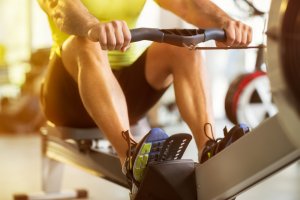
The Top 5 Cardio Workouts for Injured Athletes
Getting your heart rate up during a workout is one of the most important aspects of high performance and health. For people who have sustained injuries or chronic conditions, though, getting in their cardio in a way that won’t exacerbate the problem can be difficult. Here are the top five cardio workouts perfect for injured athletes.
Upper Body Cardio
The majority of cardio exercises involve using your legs. This presents a major problem to injured athletes, as some of the most common injuries occur in the bones, muscles and connective tissue of the legs. It might come as a surprise, though, that you don’t have to use your lower body at all to have a good cardio workout. With your arms straight, act like you’re flapping your wings and you’ll notice your heart rate pick up. Alternatively, move your arms in circles while they’re parallel to the ground
Rowing
Rowing is a high-intensity workout that, depending upon the severity of your injury, can be a great low-impact cardio alternative. Because the motions are fluid and you set your own pace, rowing machines let you get a full-body cardio workout without exacerbating any injuries you have.
Swimming
Although many strokes require a full range of motion in the arms, swimming can be very gentle on leg injuries, especially if you use leg floats. Back injuries, too, can benefit greatly from swimming, too, as suspension in water takes pressure off of the body, while water resistance provides a high-intensity, low impact workout. Always have a swimming partner or a lifeguard available when swimming, just in case something goes wrong.
Spinning
On the other side of the coin are upper body injuries. Hurt shoulders, backs and necks can make many exercises next to impossible. Stationary cardio machinery allows for the same intensity of biking or running. The main difference, though, is that stationary bikes and ellipticals provide a much more controlled environment than running outdoors or on a treadmill, and are much softer on your joints. That gentleness can also help keep hurt legs strong, depending upon the severity of the injury.
Aquabiking
Because they combine the low-impact of cycling and the high resistance of water, aquabikes might just be the perfect piece of equipment for injured athletes! Aqua bikers will also notice that their buoyancy in the water helps support joints and injuries. Even better, Wike-Up! aquabikes only weigh 21 pounds, so there’s no need to worry about the hassle of moving heavy equipment that might make an injury even worse.
You should always talk to your doctor about the best ways to stay active when you’re hurt. Each injury is different, and will affect each body differently, so there is no one perfect workout for all injuries. For more tips on fitness and health, though, be sure to come back to the Wike-Up! blog periodically to get the latest.





